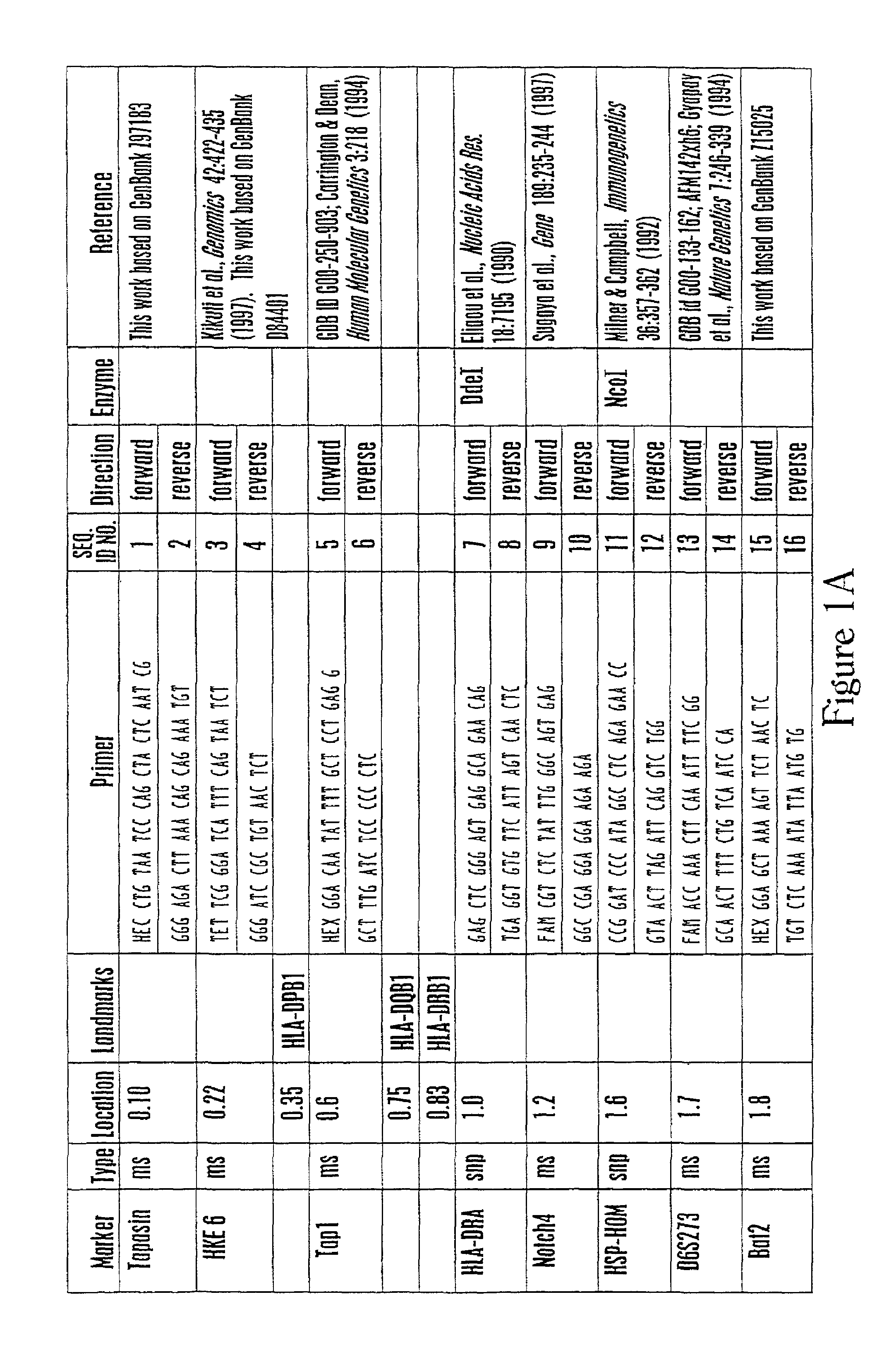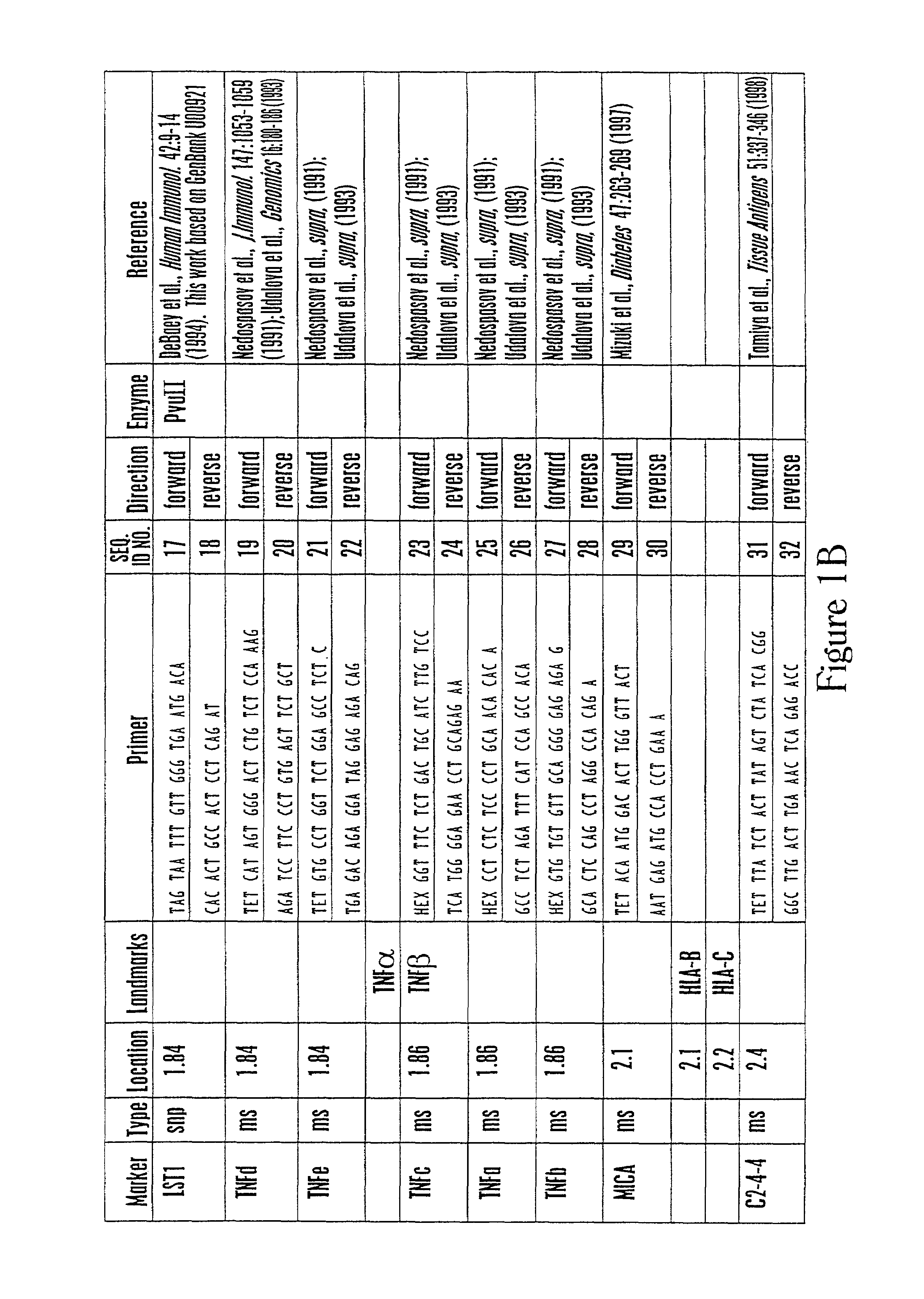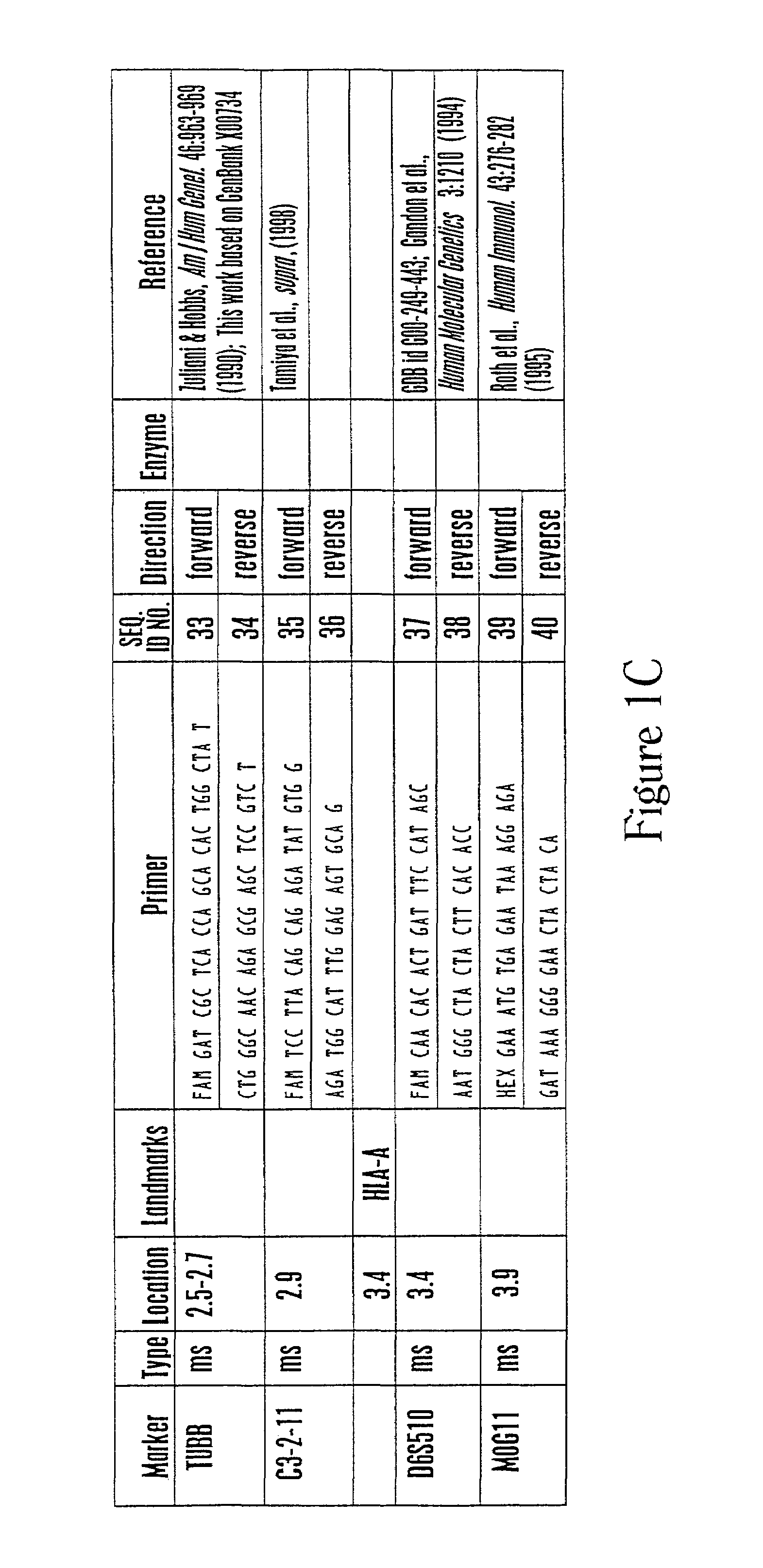Methods of using a major histocompatibility complex class III haplotype to diagnose Crohn's disease
a histocompatibility complex and major histocompatibility complex technology, applied in the field of autoimmunity and inflammatory bowel disease, can solve the problems of difficult diagnosis of crohn's disease from ulcerative colitis, difficult to distinguish between crohn's disease and ulcerative colitis, and other types of inflammatory conditions of the bowel, so as to diagnose or predict susceptibility to autoimmune diseases, diagnose or predict susceptibility to crohn's disease, and diagnose or predict suscep
- Summary
- Abstract
- Description
- Claims
- Application Information
AI Technical Summary
Benefits of technology
Problems solved by technology
Method used
Image
Examples
example i
Selection of Study Subjects
[0061]This example demonstrates the selection of appropriate study subjects For the test.
[0062]Details of the IBD patient archive at Cedars-Sinai Medical Center have been reported elsewhere and ascertainment of subjects continues (Shanahan et al., Annu. Rev. Med. 43:125-33 (1992); Toyoda et al., Gastroenterol. 104:741-748 (1993); and Yang et al., Gut 34:517-524 (1993)). For this study, the case control panel was composed of 108 patients with CD and 69 ethnically matched controls, mainly spouses. The family panel was composed of 56 families with at least one member affected with CD and no members affected with ulcerative colitis (CD only panel; 196 individuals total). The genotype of any parents For whom DNA was unavailable was determined by genotyping unaffected siblings. The use of human subjects was approved by the Institutional Review Board of Cedars Sinai Medical Center. Diagnosis of CD was determined by standard criteria (Shanahan et al., in Kelley W....
example ii
Selection of Markers and Genotyping
[0063]This example describes the genetic markers used and genotyping procedures in this study.
[0064]The 20 genetic markers used in this study are listed in FIG. 1 along with the location of the marker on the standard MHC map (e.g. Trowsdale et al., supra (1991)); a cartoon showing the relative positions of these markers is at the top of FIG. 3. Microsatellite markers (“ms”) were adapted to fluorescence-based high throughput genotyping technology (ABI 373 DNA sequencer, GeneScan® and Genotyper® software) from the references given using the PCR primers indicated in FIG. 1.
[0065]PCR was performed using AmpliTaq Gold® following the manufacturer's recommendations (Perkin Elmer, Foster City, Calif.). Primer sequences were adapted from the literature or designed using PCR primer design software (Oligo 5.0) and the DNA sequence listed. D6S273 primers were purchased from and all other primers were synthesized by Research Genetics (Huntsville, Ala.). After P...
example iii
Association of a Notch4 Allele with Crohn'S Disease
[0070]This example describes the association of the Notch4 allele 2 with Crohn's disease in an Ashkenazi Jewish population.
[0071]Genotyping For the 21 markers listed in FIG. 1 was performed in our case-control panel of 108 CD and 69 control subjects of Ashkenazi Jewish ethnicity. As FIG. 2 shows, a significant negative association between CD and allele 4 of the beta-tubulin (TUBB) locus and a significant positive association between CD and allele 2 of the Notch4 locus were observed (p=0.014 and 0.011, respectively).
[0072]High resolution molecular genotyping For the HLA-DR, -DQ, and DP loci in this case control panel has been previously reported (Trachtenberg et al., Human Immunol. 55 (Suppl. 1): 59 (1997)) and an association between CD and HLA-DRB1*0103 was observed (24 / 304 CD subjects compared with 5 / 232 control subjects, p=0.004). However, since the contribution to this association was observed in non-Jews, rather than Jews (only ...
PUM
| Property | Measurement | Unit |
|---|---|---|
| electrophoretic analysis | aaaaa | aaaaa |
| restriction fragment length | aaaaa | aaaaa |
| weight loss | aaaaa | aaaaa |
Abstract
Description
Claims
Application Information
 Login to View More
Login to View More - R&D
- Intellectual Property
- Life Sciences
- Materials
- Tech Scout
- Unparalleled Data Quality
- Higher Quality Content
- 60% Fewer Hallucinations
Browse by: Latest US Patents, China's latest patents, Technical Efficacy Thesaurus, Application Domain, Technology Topic, Popular Technical Reports.
© 2025 PatSnap. All rights reserved.Legal|Privacy policy|Modern Slavery Act Transparency Statement|Sitemap|About US| Contact US: help@patsnap.com



